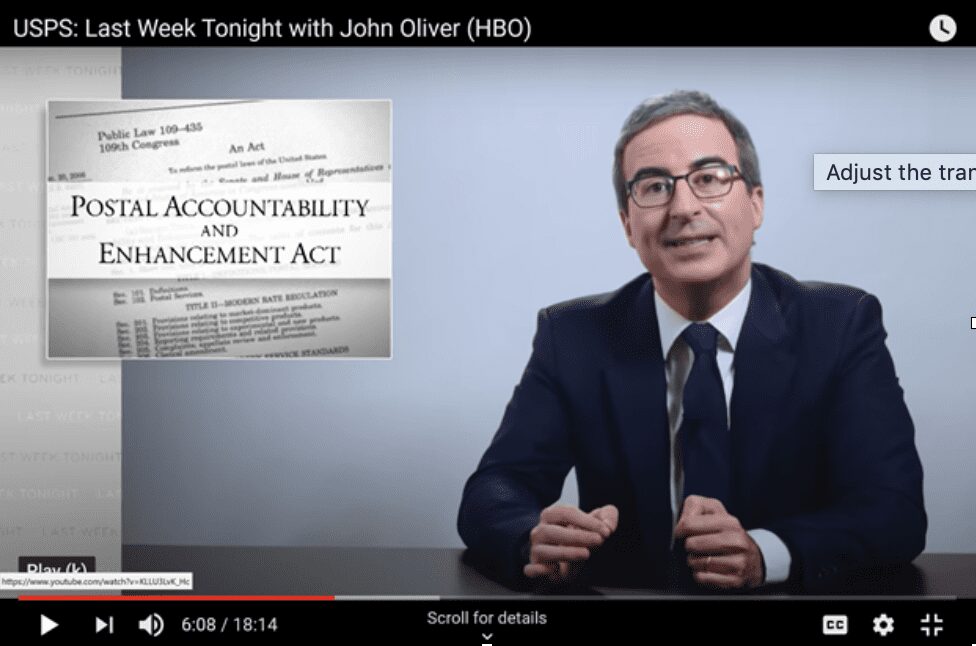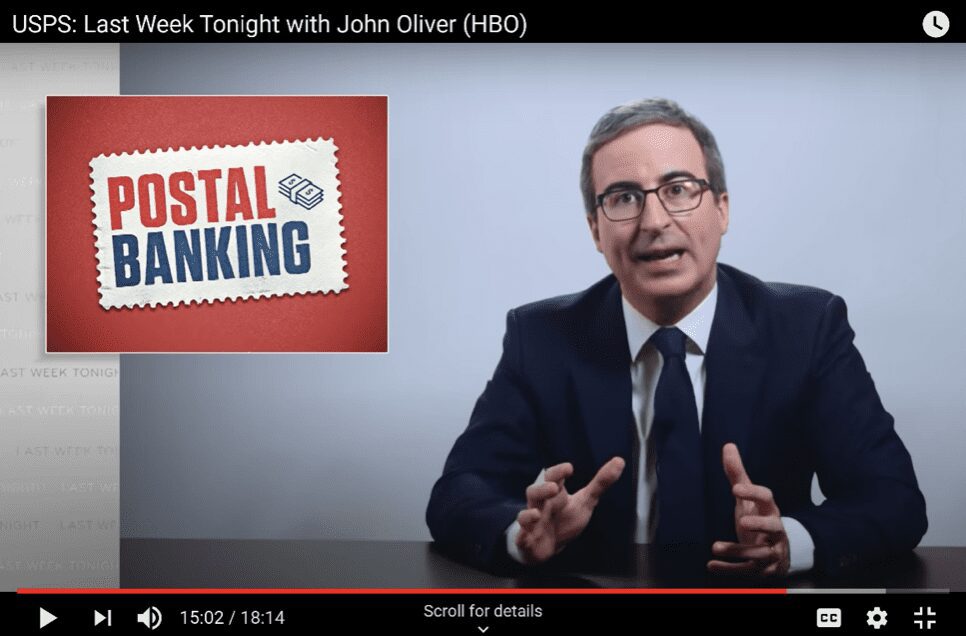
John Oliver Delivers Misinformation on the U.S. Postal Service
Ross Marchand
June 2, 2020
In a May segment, Last Week Tonight with John Oliver honed in on the United States Postal Service (USPS). While everyone can agree that America’s mail carrier is vital to our nation, a raft of misinformation continues to derail reform efforts. And with nearly $80 billion in losses from fiscal years 2007 through 2019, reform is sorely needed to get the USPS back on track and into the black. John Oliver is just the latest in a long line of celebrities to get key facts wrong regarding the financial troubles of the government agency. Below, the Taxpayers Protection Alliance sets the record straight:
Claim: “… experts believe [the Postal Service] would still be turning a profit were it not for a 2006 law called the Postal Accountability and Enhancement Act. Now, one of the things it required was for the USPS to prepay health care benefits for retirees on a 50-year schedule, starting with an aggressive obligation to set aside over $5 billion a year for 10 years. That, in itself, was a massive burden to put on the postal service, but the law also limited its flexibility to raise money by putting price caps on major products like first-class mail. So they had massive new obligations to meet even as their income was basically locked in place.” (Claim begins at 6:02 minutes)

Facts: While John Oliver characterizes the prefunding of the Postal Service’s healthcare benefits for retirees as a “death sentence,” this claim in not based in reality. The 2006 Postal Accountability and Enhancement Act required that, instead of funding retirees’ healthcare benefits on a pay-as-you-go basis, the USPS now had to preplan for these expenses and put aside financing ahead of time. This accounting change ensured that hard-working government employees would receive their benefits upon retirement. After the pre-funding provision became law in fiscal year 2006, the agency’s CFO called it “a farsighted and responsible action…” And as Oliver himself points out, that funding requirement was just for the first ten years. Starting in 2017, the USPS has been allowed to amortize remaining expenses, and these annual amortization payments are only around 10 percent of annual USPS losses. That’s hardly a “death sentence.”
Claim: “what many conservatives would prefer — is for the Postal Service to be privatized. But there are some huge drawbacks to that idea. For starters — as you may have noticed — FedEx and UPS charge a lot more to deliver than the postal service does. Also, those remote addresses that they are obligated to deliver to aren’t just difficult to get to, they’re not profitable, and in all likelihood, companies would cut those routes off, meaning a lot of people would lose access.” (Claim begins at 8:17 minutes)

Facts: This false narrative is often repeated in the media without any supporting evidence. Very few analysts in the postal policy world – including those on the center-right – are advocating for privatization, but rather comprehensive reform that focuses on spending and pricing changes. As groups such as TPA have pointed out over the past few years, the business model undergirding USPS operations simply doesn’t add up. True, “competitive products” from Amazon and Walmart are contributing on average $15 billion per year more in revenue to the USPS than they did a decade ago.
But this is a far cry from the $19 billion decline in annual revenue from “market dominant products” (e.g. birthday cards). While it’s hard to say for sure exactly how much Amazon is paying USPS to ship its packages to consumers’ doorsteps, educated guesses suggest that the e-commerce giant receives approximately a 50-60 percent discount off normal postage prices. And, there’s plenty of indirect evidence that these prices don’t fully match costs. More careful pricing policies and greater pricing transparency is key to balancing the books, and ultimately a stronger USPS. This is the opposite of weakening, or attempting to privatize, the beleaguered agency.
Claim: “Now, experts suggest post offices could expand their services to issue things like hunting and fishing licenses. And perhaps the best option is something called postal banking, where the post office doesn’t so much act as a bank as provide some very basic financial services, like savings accounts and check cashing. That wouldn’t just generate revenue — it could also help the estimated 25% of people in this country living in unbanked or underbanked communities who are otherwise often forced to turn to alternative financial services like payday lenders, which can charge up to 400% in fees and interest. And this wouldn’t be completely out of their lane.” (Claim beings at 14:50 minutes)

Facts: The agency has trouble making money on… pretty much everything, and rising package revenue is due to a skewed, unsustainable pricing formula. Nonetheless, John Oliver wants to give the beleaguered agency a foothold in the banking and small-dollar loan industries and taxpayers would be on the hook if it failed. If the postal banking experiment runs into the red, the USPS could easily teeter off the fiscal cliff and require a massive taxpayer bailout.
And based on what we’ve seen from the USPS’ money order operations in recent years, it is hard for the agency to consistently maintain profitability in financial services. Even though the USPS charges at least $1.25 for each money order (for non-military consumers), they currently only make about 10 cents per transaction once costs are considered. And in 2017, the agency actually lost 5 cents per money order. Even if postal banking ekes out a minimal profit for the USPS, it certainly won’t make a dent in the agency’s $160 billion in unfunded liabilities.
As a comedian, John Oliver can be funny and entertaining. But the need for Postal reform is no joke, and Oliver must get his facts straight on the issue.
